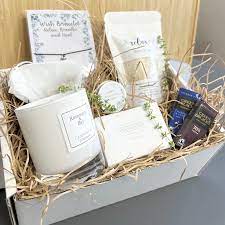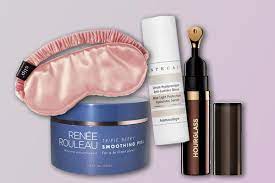Self-Care Products: Nurturing Your Mind, Body, and Soul
In today’s fast-paced world, self-care has become more important than ever. Taking care of ourselves is not just a luxury; it is a necessity for maintaining our overall well-being. And what better way to indulge in self-care than with a range of carefully curated self-care products?
Self-care products encompass a wide variety of items that are designed to nurture and pamper us. From skincare and beauty products to relaxation tools and wellness essentials, these products are tailored to help us unwind, destress, and rejuvenate.
One of the most popular categories of self-care products is skincare. Our skin is our largest organ, and it deserves some extra love and attention. With an array of cleansers, moisturizers, masks, and serums available on the market, we can create a personalized skincare routine that suits our unique needs. These products not only nourish our skin but also provide a moment of tranquility as we gently massage them into our faces.
Another essential aspect of self-care is relaxation. After a long day or week filled with responsibilities and demands, it’s crucial to carve out time for relaxation. This is where self-care products such as scented candles, essential oils, bath bombs, and luxurious bath salts come into play. These items transform our homes into serene sanctuaries where we can escape the outside world and indulge in much-needed moments of peace.
Wellness essentials also play a significant role in self-care routines. From yoga mats and meditation cushions to fitness trackers and sleep aids, these products support our physical health while promoting mental clarity. They remind us to prioritize exercise, mindfulness practices, and quality sleep – all vital components for maintaining balance in our lives.
Self-care products are not limited to personal use; they also make thoughtful gifts for loved ones. Whether it’s surprising someone with a luxurious spa gift set or sending them a calming essential oil diffuser, these items show that we care about their well-being and want them to experience the benefits of self-care too.
It’s important to note that self-care goes beyond material possessions. While products can enhance our self-care routines, true self-care involves taking time for ourselves, setting boundaries, and engaging in activities that bring us joy and fulfillment. However, self-care products can act as valuable tools to support and enhance our self-care practices.
At the end of the day, investing in self-care products is an investment in ourselves. By incorporating these items into our routines, we are prioritizing our well-being and acknowledging the importance of self-nurturing. So go ahead, explore the world of self-care products, and discover the ones that resonate with you. Embrace the opportunity to indulge in moments of relaxation, rejuvenation, and self-love – because you deserve it.
8 Essential Tips for Self-Care Product Usage: Your Guide to Healthy Skin and Wellbeing
- Read the instructions carefully before using any self-care product.
- Do a patch test before applying any product to your skin, to make sure you are not allergic to it.
- Choose natural products whenever possible, as they are less likely to contain harsh chemicals which can irritate your skin.
- Make sure you use products that are suited for your skin type; oily, dry or combination etc.
- Avoid over exfoliating and scrubbing too hard as this can damage the skin’s protective barrier and cause irritation and redness.
- Always wear sunscreen when outdoors, even on cloudy days, to protect your skin from harmful UV rays from the sun which can cause premature ageing and wrinkles.
- Stay hydrated by drinking plenty of water throughout the day to keep your skin looking healthy and glowing!
- Don’t forget about mental health care – take time out for yourself with activities such as yoga, meditation or reading a book – all of these will help reduce stress levels which in turn will help improve overall wellbeing!
Read the instructions carefully before using any self-care product.
Read the Instructions Carefully: A Crucial Step in Self-Care Product Usage
When it comes to self-care products, it’s essential to take a moment and read the instructions before diving right in. While it may seem tempting to skip this step and start using the product immediately, taking the time to familiarize yourself with the instructions can make all the difference in your self-care experience.
Instructions provide valuable information about how to properly use and get the most out of a self-care product. They often include details on application techniques, recommended usage frequency, and any precautions or warnings that need to be considered. By reading these instructions carefully, you can ensure that you’re using the product effectively and safely.
One of the primary reasons for reading instructions is to understand how much of a product should be used. Whether it’s a skincare serum, a hair treatment, or a relaxation tool, knowing the appropriate amount ensures that you’re not overusing or underusing the product. This can help maximize its benefits while avoiding any potential negative effects.
Instructions also guide us on how long we should use a self-care product for optimal results. Some products require regular use over an extended period to see noticeable improvements. By following these guidelines, we give ourselves the best chance of achieving our desired outcomes.
In addition, instructions often outline any specific steps or techniques that should be followed during application or usage. This could involve massaging a cream into your skin in a particular direction or applying a face mask evenly across your face. These details may seem minor but can significantly impact how effectively the product works.
Lastly, instructions provide crucial safety information. Some self-care products may have certain limitations or precautions due to individual sensitivities or existing medical conditions. By being aware of these warnings, you can make informed decisions about whether a particular product is suitable for you.
Remember that each self-care product is unique, with its own set of instructions tailored specifically for its purpose. Even if you’ve used similar products before, it’s always a good idea to read the instructions anew. This ensures that you’re up to date with any changes or specific guidelines for that particular product.
So, before you embark on your self-care journey with a new product, take a moment to read the instructions carefully. By doing so, you empower yourself to make the most of your self-care experience while prioritizing your safety and well-being.
Do a patch test before applying any product to your skin, to make sure you are not allergic to it.
Self-Care Tip: Patch Test for Skin Allergies – Prioritize Safety in Your Self-Care Routine
When it comes to self-care products, it’s essential to prioritize not only their effectiveness but also your safety. One crucial step in ensuring this is by performing a patch test before applying any new product to your skin.
A patch test involves applying a small amount of the product to a discreet area of your skin, such as the inside of your wrist or behind your ear, and observing any potential reactions over the next 24-48 hours. This simple yet effective technique allows you to determine if you have any allergies or sensitivities to the ingredients in the product.
Why is this step so important? Allergies can range from mild irritation and redness to more severe reactions like rashes, itching, or even swelling. By conducting a patch test, you can identify potential adverse reactions before applying the product all over your face or body, preventing unnecessary discomfort or harm.
To perform a patch test, start by cleansing the area with mild soap and water. Then, apply a small amount of the product onto the designated patch test area and gently rub it in. Leave it undisturbed for at least 24 hours while closely monitoring for any signs of irritation or allergic reaction.
If during this time you experience any discomfort, redness, itching, or swelling in the patch test area, it’s best to avoid using that particular product on your skin. However, if no adverse reactions occur within 48 hours, it is generally safe to proceed with using the product as directed.
Remember that everyone’s skin is unique and may react differently to various ingredients. What works well for others may not necessarily work well for you. By incorporating patch testing into your self-care routine, you are taking proactive steps towards safeguarding your skin health and overall well-being.
So whether you’re trying out a new skincare product, makeup item, or even a scented lotion, take a moment to perform a patch test. This small act of precaution can save you from potential discomfort and help you select the right products that truly cater to your skin’s needs.
Prioritize safety in your self-care routine and enjoy the journey of finding products that not only make you look good but also make you feel good. Your skin deserves the utmost care and attention, and a patch test is an excellent way to ensure just that.
Choose natural products whenever possible, as they are less likely to contain harsh chemicals which can irritate your skin.
Choosing Natural Self-Care Products: Nurturing Your Skin with Gentle Ingredients
When it comes to self-care products, one important tip to keep in mind is to choose natural options whenever possible. Natural products are formulated with gentle ingredients derived from nature, making them less likely to contain harsh chemicals that can irritate your skin.
Our skin is delicate and deserves to be treated with care. Harsh chemicals found in some skincare and beauty products can strip away its natural moisture, disrupt the skin’s pH balance, and cause irritation or allergic reactions. This is where natural self-care products come to the rescue.
Natural products are typically made from plant-based ingredients such as botanical extracts, essential oils, and nourishing butters. These ingredients are known for their soothing properties and compatibility with our skin. By opting for natural alternatives, you can enjoy the benefits of effective skincare without worrying about potential adverse effects.
One of the advantages of using natural self-care products is that they are often free from artificial fragrances and dyes. Synthetic fragrances can be overwhelming for some individuals and may trigger sensitivities or allergies. Natural scents derived from essential oils provide a more subtle and calming aroma, enhancing your self-care experience without overwhelming your senses.
Moreover, choosing natural self-care products contributes to a more sustainable lifestyle. Many natural brands prioritize eco-friendly practices by using recyclable packaging materials and sourcing ingredients responsibly. By supporting these brands, you’re not only taking care of your skin but also showing care for the environment.
When selecting natural self-care products, it’s essential to read labels carefully. Look out for certifications or labels indicating that the product is organic or made from naturally derived ingredients. Familiarize yourself with common harmful chemicals to avoid, such as parabens, sulfates, phthalates, and artificial preservatives.
Remember that everyone’s skin is unique, so what works for one person may not work for another. It’s always a good idea to do a patch test before introducing a new product into your routine, especially if you have sensitive skin or known allergies.
Choosing natural self-care products is a conscious decision to prioritize your skin’s health and well-being. By opting for gentle, nature-derived ingredients, you can enjoy the benefits of effective self-care without compromising on your skin’s comfort. So, take a moment to explore the world of natural self-care products and treat yourself to the nurturing goodness that nature has to offer. Your skin will thank you!
Make sure you use products that are suited for your skin type; oily, dry or combination etc.
Choosing the Right Self-Care Products: Tailoring to Your Skin Type
When it comes to self-care products, one size does not fit all. Just as we all have unique personalities and preferences, our skin types also vary. To truly reap the benefits of self-care, it’s essential to use products that are specifically suited for your skin type – whether it’s oily, dry, combination, or something in between.
Understanding your skin type is the first step towards finding the perfect self-care products that will nourish and enhance your complexion. Here’s a brief overview of different skin types and some tips on selecting the right products:
- Oily Skin: If you have oily skin, you may notice excess shine, enlarged pores, and a tendency for breakouts. Look for lightweight moisturizers and oil-free formulas that won’t clog your pores. Cleansers with salicylic acid can help control oil production without stripping away essential moisture.
- Dry Skin: Dry skin often feels tight, rough, or flaky due to a lack of natural moisture. Opt for rich and hydrating moisturizers that lock in moisture throughout the day. Look for ingredients like hyaluronic acid and ceramides to replenish and strengthen your skin’s barrier.
- Combination Skin: Combination skin is characterized by having both oily and dry areas on different parts of the face. It requires a balanced approach when choosing self-care products. Use gentle cleansers that won’t strip away natural oils entirely while targeting specific concerns with targeted treatments like serums or spot treatments.
- Sensitive Skin: If you have sensitive skin, you’ll want to avoid harsh ingredients and fragrances that can trigger irritation or redness. Opt for gentle cleansers with soothing properties like chamomile or aloe vera. Look for fragrance-free moisturizers formulated specifically for sensitive skin.
Remember that everyone’s skin is unique, so it’s important to pay attention to how your skin reacts to different products. If you notice any adverse reactions or discomfort, discontinue use and consult with a dermatologist for further guidance.
By using self-care products tailored to your skin type, you can address specific concerns and achieve optimal results. Not only will this help improve the overall health of your skin, but it will also enhance your self-care routine by providing products that work in harmony with your skin’s needs.
Investing in self-care means investing in yourself – and that includes understanding and embracing your skin type. So take the time to identify your skin’s unique characteristics and explore the wide range of self-care products available that cater specifically to you. Your skin will thank you for it!
Avoid over exfoliating and scrubbing too hard as this can damage the skin’s protective barrier and cause irritation and redness.
The Importance of Gentle Exfoliation: Nurturing Your Skin with Care
When it comes to self-care products, exfoliation is a popular step in many skincare routines. It helps remove dead skin cells, unclog pores, and reveal a fresh, radiant complexion. However, it’s crucial to approach exfoliation with caution and avoid overdoing it.
While exfoliating can offer numerous benefits for your skin, excessive or harsh scrubbing can do more harm than good. Over-exfoliating can damage the skin’s protective barrier, leading to irritation, redness, dryness, and even breakouts.
The skin’s protective barrier acts as a shield against environmental aggressors and helps retain moisture. When this barrier is compromised due to aggressive exfoliation techniques or excessive frequency, it weakens the skin’s natural defenses. This may result in increased sensitivity and vulnerability to external irritants.
To maintain a healthy balance, opt for gentle exfoliation methods that respect your skin’s natural resilience. Look for products specifically formulated for sensitive or delicate skin types. These products often contain mild exfoliating agents such as fruit enzymes or gentle microbeads that help slough off dead skin cells without causing irritation.
Additionally, consider adjusting the frequency of your exfoliation routine based on your skin’s needs. While some individuals may benefit from exfoliating two to three times a week, others may find that once a week is sufficient. Listen to your skin and observe how it responds to find the right balance for you.
Remember that self-care is not about pushing your skin to its limits but rather nurturing it with care and kindness. Treat your skin gently during the exfoliation process by using light pressure and circular motions instead of aggressive scrubbing. Allow the product to do its job without excessive force.
After exfoliating, be sure to follow up with hydrating and soothing products to replenish moisture levels and restore the skin’s balance. Moisturizers, serums, and facial oils can help nourish and protect your skin, promoting a healthy complexion.
By adopting a mindful approach to exfoliation, you can enjoy the benefits of this self-care practice without compromising your skin’s health. Embrace the idea of nurturing your skin gently and respecting its natural processes. Your skin will thank you with a radiant glow and a renewed sense of vitality.
Always wear sunscreen when outdoors, even on cloudy days, to protect your skin from harmful UV rays from the sun which can cause premature ageing and wrinkles.
Protecting Your Skin: The Importance of Sunscreen in Self-Care
When it comes to self-care, one tip that should never be overlooked is the use of sunscreen. We often associate sunscreen with sunny beach days, but the truth is, protecting our skin from harmful UV rays is a year-round necessity – even on cloudy days.
The sun emits ultraviolet (UV) radiation, and prolonged exposure to these rays can have damaging effects on our skin. One of the most significant concerns is premature aging. UV rays can break down collagen and elastin in the skin, leading to the development of fine lines, wrinkles, and age spots. By wearing sunscreen daily, we create a barrier that shields our skin from these harmful rays and helps prevent premature aging.
Cloudy days may give us a false sense of security, but UV rays can penetrate through clouds and still reach our skin. This means that even when it’s overcast or raining, we are still at risk of sun damage if we neglect to protect ourselves. Making sunscreen a part of your daily routine ensures that your skin remains shielded from these invisible threats.
Choosing a broad-spectrum sunscreen with a high SPF (Sun Protection Factor) is crucial. Broad-spectrum sunscreens protect against both UVA and UVB rays. UVA rays are responsible for long-term damage like premature aging, while UVB rays cause sunburns. By selecting a high SPF, you increase your protection against both types of radiation.
Applying sunscreen should become as routine as brushing your teeth or washing your face. Make it a habit to apply sunscreen generously to all exposed areas of your body before heading outdoors. Don’t forget areas like your neck, ears, hands, and feet – they are just as susceptible to sun damage.
In addition to wearing sunscreen, it’s essential to practice other sun-safe habits. Seek shade during peak sunlight hours when the rays are strongest (usually between 10 am and 4 pm). Wear protective clothing, such as hats, sunglasses, and lightweight, long-sleeved garments. These extra precautions further reduce your exposure to harmful UV rays.
By incorporating sunscreen into your self-care routine, you are taking a proactive step in safeguarding your skin’s health and preserving its youthful appearance. Remember, self-care involves nurturing yourself from the inside out, and protecting your skin is an integral part of that process.
So whether it’s a sunny day or a cloudy one, don’t forget to apply sunscreen before stepping outside. Your skin will thank you for it in the long run as you enjoy the benefits of a healthy, radiant complexion.
Stay hydrated by drinking plenty of water throughout the day to keep your skin looking healthy and glowing!
Stay Hydrated: The Secret to Healthy, Glowing Skin
When it comes to self-care and maintaining a healthy lifestyle, one tip that often gets overlooked is the importance of staying hydrated. While we often associate hydration with quenching our thirst and keeping our bodies functioning properly, it also plays a significant role in the health and appearance of our skin.
Water is the elixir of life, and its benefits extend far beyond simple hydration. Our skin is made up of cells that require water to function optimally. When we are adequately hydrated, our skin becomes plump, supple, and radiant. On the other hand, dehydration can lead to dryness, dullness, and even exacerbate existing skin conditions.
Drinking plenty of water throughout the day is an easy yet powerful way to support our skin’s health and achieve that coveted healthy glow. Water helps flush out toxins from our bodies, which can contribute to clearer skin and a more even complexion. It also aids in maintaining the elasticity of our skin, reducing the appearance of fine lines and wrinkles.
In addition to drinking water, incorporating hydrating foods into our diet can further enhance the benefits for our skin. Fruits and vegetables with high water content such as cucumbers, watermelons, strawberries, oranges, and leafy greens not only provide essential nutrients but also contribute to overall hydration.
To make staying hydrated more enjoyable and convenient throughout the day, consider investing in a reusable water bottle that you can carry with you wherever you go. This way, you’ll always have a reminder to sip on water regularly.
While drinking plenty of water is essential for healthy skin, it’s important to remember that it is just one piece of the self-care puzzle. A holistic approach that includes a well-rounded skincare routine tailored to your specific needs will yield even better results. Combine hydration with cleansing products suitable for your skin type, moisturizers enriched with hydrating ingredients, and sun protection to keep your skin healthy and glowing.
So, let’s raise a glass to hydration and its incredible benefits for our skin! By making a conscious effort to drink plenty of water throughout the day, we are not only nourishing our bodies but also giving our skin the care it deserves. Embrace this simple yet effective self-care tip, and watch as your skin transforms into a radiant canvas that reflects your overall well-being.
Don’t forget about mental health care – take time out for yourself with activities such as yoga, meditation or reading a book – all of these will help reduce stress levels which in turn will help improve overall wellbeing!
Don’t Forget About Mental Health Care: Taking Time Out for Yourself
In the hustle and bustle of our daily lives, it’s easy to overlook the importance of mental health care. While self-care products can certainly contribute to our well-being, it’s crucial not to neglect the power of activities that nurture our minds and souls.
One effective way to prioritize mental health care is by taking time out for yourself. Engaging in activities such as yoga, meditation, or reading a book can work wonders in reducing stress levels and improving overall well-being.
Yoga is a practice that combines physical movement with mindfulness. It helps us connect with our bodies, release tension, and cultivate inner peace. By setting aside a few minutes each day to practice yoga poses and breathing exercises, we can experience a sense of calmness and clarity that carries over into other aspects of our lives.
Meditation is another powerful tool for nurturing mental health. It allows us to quiet the mind, focus on the present moment, and cultivate a sense of inner stillness. With regular practice, meditation can help reduce anxiety, improve concentration, and promote emotional well-being. Just a few minutes of meditation each day can make a significant difference in how we navigate life’s challenges.
And let’s not forget the simple pleasure of reading a book. In today’s digital age, it’s easy to get caught up in screens and constant stimulation. Taking time out to immerse ourselves in a good book can transport us to different worlds, expand our knowledge, and provide much-needed relaxation. Whether it’s fiction or non-fiction, reading offers an escape from everyday worries while stimulating our minds.
Engaging in these activities not only provides an opportunity for self-reflection but also helps us recharge and rejuvenate. By reducing stress levels through yoga, meditation or reading, we give ourselves the gift of improved mental well-being.
Remember that self-care is not just about external products; it’s about nurturing our minds, bodies, and souls. So, make it a priority to set aside time for yourself each day. Whether it’s a few minutes of yoga, a short meditation session, or diving into a captivating book, these activities will help reduce stress levels and improve your overall well-being. Embrace the power of self-care for your mental health – you deserve it!




